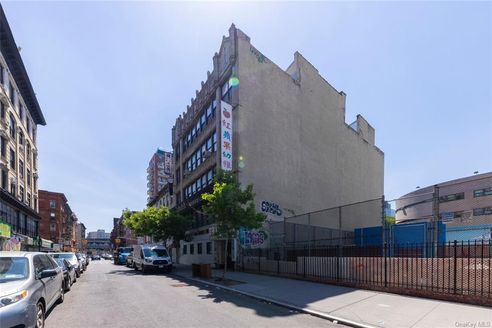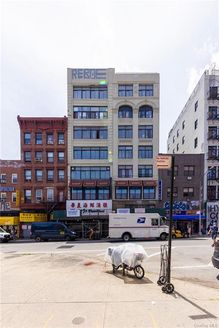Chinatown, Manhattan, NY
About Chinatown, Manhattan
Chinatown is a small, dense neighborhood in lower Manhattan located at the base of the Manhattan Bridge and surrounded by City Hall, Tribeca, SoHo, Little Italy, and the Lower East Side.
Chinatown has been a center for Chinese expatriate and immigrants communities in New York for more than a century. Over the past decades, new Chinese communities have grown in other areas of the city, while Chinatown has evolved with an influx of more non-Chinese residents. Still, the neighborhood retains a unique character and is packed with Chinese businesses and restaurants.
The History of Chinatown, Manhattan
Through the 1800s the area now known as Chinatown was known as Five Points and was notorious for its dense, slum-like housing and as a battleground for rival gangs. The neighborhood’s first Chinese immigrant - a Cantonese businessman named Ah Ken - arrived in the 1850s and set up a cigar shop on Park Row. The Chinese population in the neighborhood grew to about 2,000 by 1882, when immigration from China was restricted. After immigration from China was liberalized in 1965, Chinatown’s Chinese population grew substantially and the area once dominated by single men housed more families. Immigrants from different parts of China, who spoke different languages and dialects, established unique clusters within the expanding Chinatown area. Most significantly, Fujianese migrants established a “Little Fuzhou” subneighborhood to the east of Bowery.
Chinatown, Manhattan Demographics
Chinatown is home to about 40,000 residents. The neighborhood has the largest concentration of Chinese people in the western hemisphere. More than half the population of the neighborhood is ethnically Chinese. There is also a substantial white and hispanic population in this area. The median income in the neighborhood is below the city average and there is a lower-than average- proportion of high-income earners.
Transportation in Chinatown, Manhattan
Chinatown is well-connected to numerous subway lines, with the 6, J, N, Q, R, W lines meeting at the Canal St. stop and the B and D at Grand St. The location at the edge of the Manhattan Bridge and the nearby FDR Drive give drivers easy access to Brooklyn and other parts of Manhattan, though driving and parking in the crowded neighborhood are not easy. Bikers can easily connect to the East River Greenway or several bike paths through Lower Manhattan.
Housing in Chinatown, Manhattan
Chinatown saw a growing boom in luxury condo development over the past decade, with high-end units in new buildings and converted industrial spaces that are marketed both to Chinese and non-Chinese residents. Many apartments in the neighborhood are in century-old tenement buildings, notorious for their cramped quarters. Some units are further split up to allow for small, low-cost dwellings for immigrants and workers. Other units have been renovated and expanded into luxury condos or apartments.
Neighborhood Life in Chinatown, Manhattan
The dense neighborhood is crowded throughout the day and evening with residents and visitors shopping, going to restaurants, and out socializing. Chinatown is home to a rich array of Chinese restaurants, grocers, social clubs, and small businesses. The evolving neighborhood is home to a growing number of boutique businesses, restaurants, and other venues not specifically run by or serving the Chinese community. The plazas and ball courts at Columbus Park and Sara D. Roosevelt Park are vital outdoor spaces for the crowded neighborhood and they are often filled with handball and roller hockey players and other groups socializing.
Chinatown, Manhattan Real Estate Trends
In the last few decades, rising rents in Manhattan have hastened the shift of Chinese residents and immigrants to other Chinese cultural enclaves in Brooklyn, Queens, upper Manhattan and in the suburbs. At the same time, more non-Chinese residents have moved into Chinatown and neighborhoods nearby. As prices rise and more affluent residents have sought homes in the neighborhood, luxury developments and renovations of older tenement buildings have become common and the supply of affordable homes for Chinese and Asian immigrants has shrunk.
Neighborhoods Similar to Chinatown, Manhattan
The Truth You Should Know About Chinatown, Manhattan
How Safe is Chinatown, Manhattan?
Crime rates in Chinatown are slightly above the city average. Streets throughout the neighborhood are well populated at most hours; though areas of the neighborhood may feel hectic or crowded, they will rarely feel deserted.
Are Schools Good in Chinatown, Manhattan?
Schools in Chinatown rate very well. The neighborhood elementary schools, PS 124/Yung Wing, PS 42/Benjamin Altman, and PS 2/Meyer London, all rate very well on both student achievement and student progress. Middle schools and high schools, including the neighborhood’s unique High School For Dual Language And Asian Studies, also rate highly.
Popular Eateries in Chinatown, Manhattan?
upscale Chinese
What to Do In Chinatown, Manhattan?
Eat some of the tastiest Chinese food in the city.
Shop boutique stalls at the Canal Street Market.
Watch - or join - a handball game in Sara D. Roosevelt Park.
Check out the East River views from the walkway of the Manhattan Bridge.
Is Chinatown Dog Friendly?
Chinatown’s cramped quarters may not be the most pet friendly. There are no dog parks in the neighborhood (though there are a few a short walk away at Coleman Park or FishBridge Park). Pet stores and services are also scarce within the core of Chinatown, but are available in nearby neighborhoods.
Is Chinatown Good for Cycling?
Cyclists in Chinatown have easy access to the nearby East River Greenway, and protected bikeways on Chrystie and Allen streets, and the Manhattan Bridge and Williamsburg Bridge bike paths. The busy streets around Chinatown are more of a challenge for bikers, who have to contend with unloading trucks, coach buses, and double-parked cars.
3 Things to Know Before Moving to Chinatown, Manhattan
Canal Street is a bustling area with many shoppers, buses, and heavy traffic
Major road construction is ongoing along Worth St.
Residents in Chinatown have complained about illegally parked, large intercity buses

